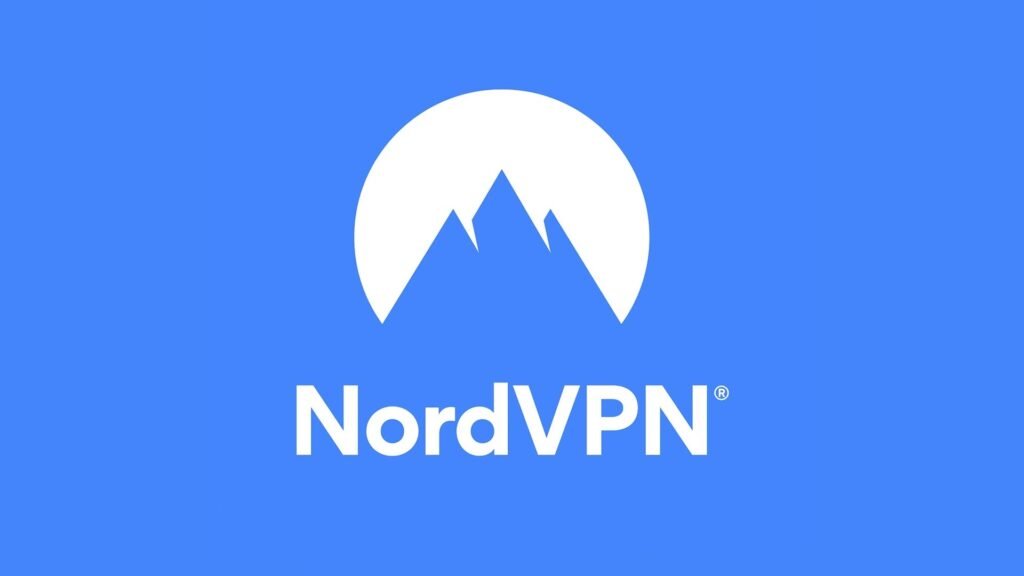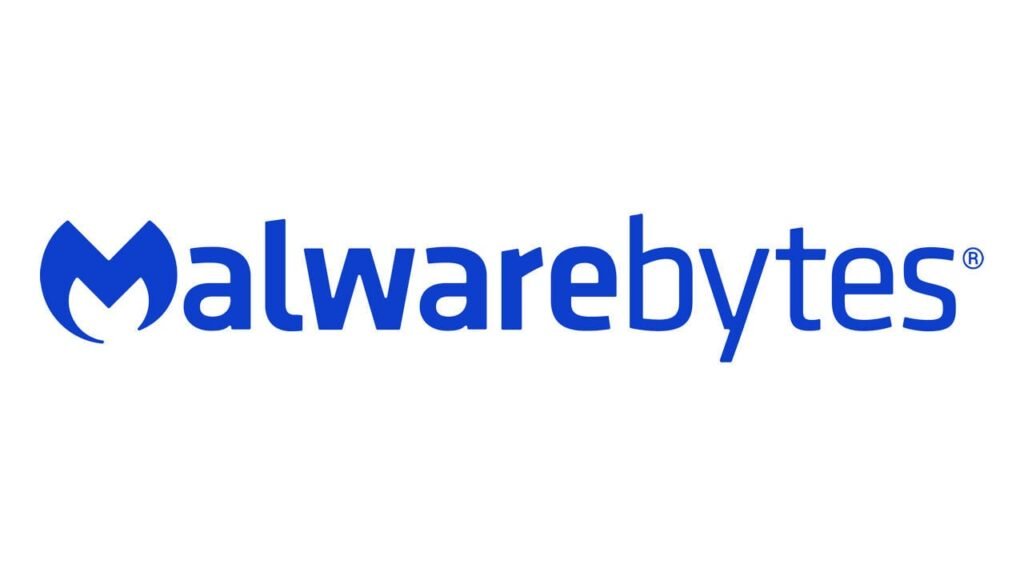As the world becomes increasingly digital, understanding the top firewalls for network security is essential for safeguarding your valuable data. In the past year, more than 4,600 data breaches were reported in the U.S., affecting over 5 billion records1. In this 2024 firewall guide, we will delve into the importance of network firewall solutions, explore various types of firewalls available, and provide insights into leading vendors that can help protect your organization from cyber threats. Given that malware deployment was the most common action taken by threat actors, occurring in 43% of incidents, the need for effective firewalls has never been more critical1. With significant growth projected in the network security firewall market, increasing from $5.74 billion in 2023 to $6.89 billion in 2024, it is vital to stay informed about the current trends and technologies available2.
Key Takeaways
- • Over 4,600 data breaches reported in the U.S. in the past year.
- • 43% of incidents involved malware deployment, emphasizing the need for robust firewalls.
- • The network security firewall market is expected to grow significantly in 2024.
- • Understanding firewalls is essential for businesses of all sizes.
- • Stay updated on the latest security technologies to protect your assets effectively.
Introduction to Network Security Firewalls
Network security firewalls serve as the first line of defense against cyber threats, acting as a barrier between trusted internal networks and untrusted external environments. They are pivotal in preventing unauthorized access and data breaches while ensuring secure data transfers. In the realm of firewall introduction, understanding the mechanism of firewalls is vital; they operate based on predefined rules and scrutinize packet headers against these rules, enhancing overall security3.
The importance of firewalls cannot be overstated. They significantly enhance network security by protecting sensitive data from common threats and attacks, aiding organizations in complying with regulatory frameworks while meeting industry best practices4. Reasons for this enhanced security include their ability to effectively manage traffic and establish different security zones within a network.
Types of firewalls employed in modern networks vary in functionality, including packet filtering firewalls, stateful inspection firewalls, and next-generation firewalls (NGFWs)5. Each type has unique characteristics that contribute to network security, such as deep packet inspection and URL filtering based on geolocation and reputation. The proper configuration and management of firewall rules, along with regular updates and monitoring, are considered best practices to maximize their effectiveness.
Why Firewalls Matter for Your Network Security
In today's digital landscape, the importance of firewalls as a critical component of network security cannot be overstated. They form a robust defense against a multitude of threats, helping to safeguard sensitive data from unauthorized access and attacks. A recent study reported that 98% of documented content identified firewalls as essential for maintaining secure systems6. By employing both hardware and software firewalls, organizations can ensure that different layers of their system are protected, covering both desktop computers and applications7.
The primary firewall benefits include the ability to halt malicious activities before they reach sensitive areas of your network. This is particularly relevant given that next-generation firewalls (NGFW) employ advanced techniques such as application filtering to boost security measures8. In a comprehensive network setup, utilizing external and local firewalls can further enhance security without sacrificing debugging or access control, thereby preventing potential financial losses from data breaches6.
Moreover, as firewalls have a long history, dating back to the late 1980s, ongoing advancements continue to refine their capabilities in mitigating threats and maintaining performance8. Implementing firewalls effectively can help organizations manage not just security breaches but also unproductive network activity, optimizing overall bandwidth usage. This makes understanding the full scope of firewalls' functionality essential for any enterprise6.
Understanding Different Types of Firewalls
Firewalls play a critical role in protecting your network. They can be classified into several types of firewalls, with each serving unique functions to enhance security. The primary categories include packet filtering firewalls, stateful firewalls, circuit-level gateways, and proxy firewalls.
Packet filtering firewalls operate inline at network junction points, evaluating each packet against predetermined security criteria. This method allows organizations to quickly determine if a packet is acceptable or not based solely on header information9. On the other hand, stateful firewalls keep track of active connections, providing a more nuanced approach to filtering by monitoring the entire session9.
- • Circuit-level gateways function at the session layer, managing connections between host computers.
- • Proxy firewalls, acting as intermediaries, allow or block traffic based on application-specific criteria, offering enhanced control over network traffic.
The emergence of next-generation firewalls (NGFW) has introduced sophisticated capabilities by integrating traditional filtering methods with advanced security features such as deep packet inspection and intrusion prevention systems10. Host-based firewalls protect individual devices and are becoming increasingly important as more users access networks remotely11.
This understanding of the various types of firewalls empowers you to select the right solutions to meet your security needs effectively. For further insights on privacy policies and data handling, you can check this useful resource.
Next-Generation Firewalls: What You Need to Know
Next-generation firewalls (NGFWs) are indispensable in today’s cybersecurity landscape, providing a suite of advanced firewall features that go far beyond traditional firewall capabilities. These solutions not only integrate intrusion prevention systems but also offer enhanced application awareness and advanced threat protection. As businesses transition towards decentralized operations and cloud-native architectures, the demand for NGFWs has surged, making them vital for adapting to new network challenges12.
Modern NGFWs are designed to tackle the increasing complexity of cyber threats by offering comprehensive threat protection that includes features like deep packet inspection (DPI) and real-time traffic analysis. This adaptability empowers organizations to maintain deep visibility and control over network activities, regardless of how applications are accessed, whether on-premise or in the cloud13. With user-based policies, you can ensure that security measures align with specific user groups, enhancing both security and compliance efforts.

While NGFWs provide sophisticated security, they do come with challenges such as complex configuration and potential performance impacts due to deep inspections. Organizations must also consider upfront costs when implementing these advanced firewall solutions12.
When selecting an NGFW, consider key factors including:
- • Security Features
- • Performance (Throughput, Latency, Concurrent Sessions)
- • Scalability
- • Ease of Management
- • Integration options
- • Vendor Support
- • Compliance requirements
As the firewall landscape evolves, NGFWs continue to integrate with other technologies like cloud-based firewalls and unified threat management systems, enhancing the security framework for modern enterprises14. By employing next-generation firewalls, organizations can establish a resilient network security posture capable of defending against an array of evolving threats.
The Role of Unified Threat Management (UTM)
Unified Threat Management (UTM) represents a significant shift in the cybersecurity landscape. By consolidating multiple security features into a single device, UTM solutions streamline the protection of networks against a variety of threats, including viruses, malware, and network attacks15. This integrated security approach simplifies administration, making it easier for organizations to manage complex security needs without the burden of multiple devices15.
With the rise of cloud-based solutions, many small and medium-sized businesses are increasingly adopting UTM products and services to handle their security requirements from one cohesive system15. UTM systems typically incorporate various security functions such as antivirus software, VPN, content filtering, and intrusion prevention, all managed through a centralized console16. This reduces the number of devices required, leading to potential cost savings while enhancing overall security awareness and responsiveness to threats16.
Furthermore, UTM systems utilize two primary inspection methods—flow-based and proxy-based—which work in conjunction with firewalls to defend private networks from external dangers15. Cybersecurity teams, particularly those operating in dedicated security operations centers, are the primary users of these systems, alongside C-level executives like CISOs and CTOs, who rely on UTMs for a first line of defense against cyberattacks15. As the cyber threat landscape evolves, the integration of artificial intelligence into UTM systems is expected to enhance performance and adaptivity, addressing the complexities of modern cybersecurity15.
Top Firewalls for Network Security
As you navigate the landscape of network security in 2024, understanding the options provided by top firewall vendors is essential. This overview will introduce you to leading firewall solutions, helping you conduct effective firewall solutions comparisons based on key features important for your needs.
Overview of Leading Firewall Solutions
Today, numerous firewall solutions are available, each catering to various security needs. Cisco offers the ASA with robust features for enterprise environments, while Fortinet's FortiGate is known for its excellent performance in handling diverse traffic loads.
Home firewall purchases are on the rise due to the growing work-from-home trend, making options like Ubiquiti's Unifi Security Gateway (USG) attractive, priced at $366.90 on Amazon. Likewise, the Cisco Meraki MX64 retails for $527.69, combining a user-friendly interface with strong security functionalities17. For small businesses, the WatchGuard Firebox T25, offered at $509.64, provides essential protection with its Basic Security Suite17.
Key Features of Each Solution
It's crucial to assess the specific firewall features offered by various vendors. For instance, the Fortinet FortiGate 30E provides a one-year software license for $388, making it a viable choice for those looking for cost-effective options without compromising security standards17. The Netgate 2100 stands out with impressive throughput metrics: 1.5 Gbps of routing speed and 850 Mbps of firewall throughput, making it suitable for more data-intensive applications17.
In the cloud realm, Azure Firewall offers a cloud-native solution for protecting services on Azure and integrates seamlessly with other Microsoft offerings18. In contrast, solutions like the Hillstone E-Series Firewall provide flexible extension and advanced threat detection features, essential for modern security needs18.
| Firewall Solution | Price | Key Features |
|---|---|---|
| Cisco Meraki MX64 | $527.69 | User-friendly, strong security functionalities |
| Fortinet FortiGate 30E | $388 | One-year software license, efficient performance |
| Ubiquiti Unifi Security Gateway (USG) | $366.90 | Affordable, suitable for home offices |
| WatchGuard Firebox T25 | $509.64 | Basic Security Suite, strong protection |
| Netgate 2100 | Varies | 1.5 Gbps routing speed, 850 Mbps throughput |

Enterprise Firewall Systems: A Deep Dive
As organizations scale, the need for robust enterprise firewall systems becomes essential. These systems enhance enterprise security solutions by integrating advanced features tailored to meet complex network demands. Businesses must consider compliance with regulations and the ability to maintain and support these powerful tools.
Next-generation firewalls (NGFWs) offer superior protections compared to traditional business firewalls. They include deep packet inspection, intrusion protection system (IPS), and malware detection capabilities that protect against sophisticated cyber threats such as ransomware and zero-day vulnerabilities19. By employing features like SSL decryption and threat intelligence, NGFWs manage network traffic effectively to prevent unauthorized access19.
Evaluating NGFW options involves assessing key features that enhance network security. For instance, solutions may include advanced threat prevention, URL filtering, and application layer controls19. Popular vendors such as Palo Alto Networks and Fortinet offer varied pricing, making it crucial for enterprises to determine a solution aligned with their specific budgetary needs. For example, Palo Alto's NGFWs start around $1,000 annually, and FortiGate's entry-level models begin at approximately $600, while high-end models can reach up to $1 million20.
In summary, selecting the right enterprise firewall systems can significantly impact your network security framework. Enterprises can harness NGFWs that not only fulfill immediate security needs but also evolve with their growing infrastructures, establishing a fortified environment for sensitive data protection and compliance adherence.
Firewall Hardware Appliances vs Virtual Appliances
Choosing between hardware appliances and virtual appliances for your network's firewall is a crucial decision that impacts both security and efficiency. Understanding the unique advantages of each type can assist you in making informed selections that align with your organization's needs.
Benefits of Using Hardware Appliances
Hardware appliances serve as physical gatekeepers between your network and the outside world, managing traffic effectively and providing security21. This added layer of security is crucial, especially since they often come with advanced features such as intrusion prevention and deep packet inspection, therefore delivering a comprehensive security solution21. One significant advantage is the reliable protection they offer as they maintain a constant operational status, minimizing exposure to threats22.
Research indicates that hardware firewalls provide better security compared to their software counterparts since they operate on a separate system that is less vulnerable to various attacks22. Furthermore, they facilitate network-wide updates and protection enhancements simultaneously, making maintenance simpler while ensuring consistent security across all connected devices22.
In firewall comparisons, several users preferred hardware appliances, emphasizing their performance in high-availability configurations. For instance, a post suggested using dual Draytek firewalls in high-availability mode, suitable for smaller businesses requiring reliable uptime23. Another recommendation pointed toward Cisco and HP hardware appliances known for effective load balancing and failover capabilities23.
Despite their advantages, deploying hardware appliances can require significant management, including configuration adjustments and physical setups21. Organizations should weigh these factors against the flexibility offered by virtual appliances, which can be installed quickly and do not always necessitate network security expertise21.
Best Firewall Software: A Comparative Analysis
When choosing the best firewall software, you'll want to consider several key factors, including protection capabilities, setup simplicity, and overall customer service. Software comparisons typically highlight user ratings, with average scores ranging from 3.8 to 4.6 out of 5. Notably, Fortinet FortiManager leads with the highest rating in various firewall software reviews24.
The performance of firewall tools can be gauged from the number of reviews they attract. For instance, Microsoft Azure Firewall Manager boasts 244,900 reviews, significantly surpassing AWS Firewall Manager's 130,371 and Sophos Central's 4,68624. This volume of feedback can help you understand prevailing user sentiments regarding different firewall solutions.
Pricing models vary widely among these tools. Monthly licenses range from $320 to $551, and specific offerings like Microsoft Azure Firewall Manager and AWS Firewall Manager employ pricing strategies based on device packs and users24. This flexibility allows you to tailor your firewall solution according to your budget and needs.
Most firewall software products offer essential features such as compliance management, rule management, and change management, critical for maintaining security policies24. However, limitations do exist, with users frequently raising concerns about initial setup complexities, interface usability, and varying support availability.
Here's a comparative table summarizing key aspects of some widely recognized firewall software:
| Firewall Software | Average User Rating | Number of Reviews | Price (Monthly) | Notable Features |
|---|---|---|---|---|
| FortiManager | 4.6 | N/A | $500 – $35,000 | Compliance & Change Management |
| Microsoft Azure Firewall Manager | N/A | 244,900 | $320 + (Depends on packs) | Flexible Pricing Structure |
| AWS Firewall Manager | N/A | 130,371 | $320 + (Depends on packs) | Adaptive for Cloud Security |
| Sophos Central | N/A | 4,686 | N/A | Integrated Security Features |
Choosing the Right Firewall Security Products
When deciding on firewall security products, you need to review multiple factors that can significantly impact your network's defenses. A thoughtful approach ensures that your firewall selection aligns with organizational objectives, security needs, and budget constraints. Understanding these aspects creates a pathway to effective cybersecurity strategies.
Factors to Consider
Key considerations during the firewall selection process include:
- • Scalability: Ensure that the firewall can grow with your organization as your network expands.
- • Compliance: Choose a solution that meets industry regulations relevant to your sector.
- • Integration: Assess how well the firewall integrates with existing security systems and infrastructure.
- • Types of Firewalls: Consider the pros and cons of various firewall types such as packet filtering, circuit-level gateways, application-level gateways, stateful inspection firewalls, and next-generation firewalls. For instance, packet filtering firewalls support complex security policies but lack user authentication and logging features25. Application-level gateways can detect hidden attacks, providing robust security controls, but they can be complex and may impact performance25.
Budgeting for Network Firewall Solutions
Effective budgeting for firewalls is crucial for maximizing your investment. Implementing a centralized firewall management solution can improve your security posture while enhancing operational efficiency26. It is crucial to adopt a layered approach that incorporates multiple types of firewalls, as this improves resistance against potential cyber threats26. Additionally, regular updates to firewall rules are needed to minimize attack surfaces and maintain strong defenses26.
Establishing a budget should account for:
- • Initial Costs: Evaluate procurement expenses for hardware and software firewalls.
- • Ongoing Maintenance: Ensure you have funds available for regular updates and configuration backups.
- • Training and Support: Allocate resources for personnel training on firewall management to enhance security.
Future Trends in Network Firewall Industry
As the cyber landscape becomes increasingly complex, the future of firewalls is evolving rapidly. The trend toward Firewall-as-a-Service (FWaaS) is gaining traction, providing flexibility and scalability as organizations transition to cloud-based solutions. This model stems from the growing complexity of securing information effectively, coupled with a notable shortage of IT talent27. Consequently, businesses are looking towards advanced security solutions like managed security services providers (MSSP) and Security Information and Event Management (SIEM) systems to ensure robust cybersecurity.
Recent projections indicate that by 2026, software-as-a-service (SaaS) and virtual-based network security will comprise 51% of the total $33 billion market revenue, reflecting significant shifts in network firewall trends27. In contrast, physical firewall appliances are expected to grow at a moderate rate of 7% annually during the same period, underscoring the declining reliance on traditional hardware27.
With more organizations adopting multiple types of firewalls, Gartner predicts that over 60% will utilize hybrid mesh firewalls by 202628. This approach is critical in addressing the rising threat landscape, where 91% of global leaders believe that a cybercrime-related catastrophe is imminent28. The increasing sophistication of attacks, bolstered by cybercrime-as-a-service (CaaS), is anticipated to propel growth in SaaS and virtual-based web application firewalls (WAFs) at an impressive rate of 25% annually, which is over three times that of physical firewall appliances27.
Conclusion
Securing your network with the right firewalls is more critical than ever in today's digital landscape. Organizations must carefully evaluate their specific needs, as firewalls not only protect against viruses and unauthorized access but also play a crucial role in preventing data breaches and ransomware attacks29. This conclusion on firewalls emphasizes the importance of leveraging advanced filtering capabilities, like deep packet inspection, to add an extra layer of security against cyber threats30.
It's essential to remember that hardware firewalls are particularly beneficial in large-scale environments, offering extensive traffic filtering capabilities. However, businesses should be mindful of the significant initial investment and ongoing expertise required for effective deployment and management30. In this ever-evolving cyber landscape, staying informed about advancements and trends in firewall technology will ensure you can adapt and protect your digital assets effectively.
Ultimately, the right firewall solutions are a foundation for securing your network, providing not only protection but also compliance with industry regulations and policies that guard sensitive data29. By investing in quality firewalls, you can create a robust security posture, safeguarding your organization from potential threats while enabling smooth operations.




